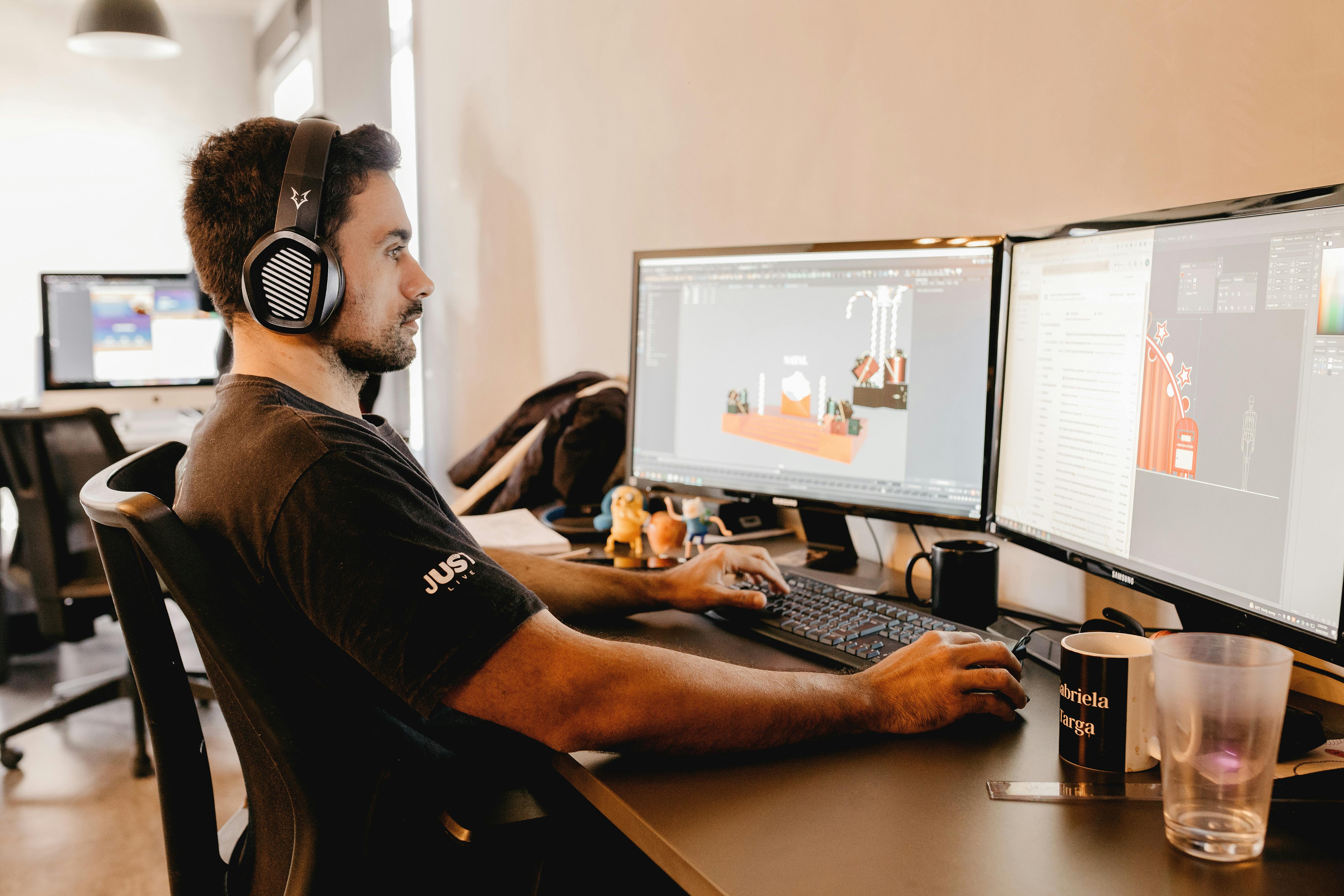Learn the Basics Behind Live 3D Mobile Animations
The striking visual effects seen in 3D phone wallpapers often use the same animation principles found in digital design, just on a smaller scale. Learn how creators use tools like After Effects, Blender or Lottie to design moving graphics that respond to touch or movement. While these are not game-level 3D effects, the core techniques can be a starting point for further animation learning.

How 3D Phone Wallpapers Are Made
The creation of 3D phone wallpapers begins with conceptualization and design planning. Artists typically sketch initial ideas before moving to digital platforms. The process involves modeling three-dimensional objects using specialized software that allows manipulation of virtual objects in a three-dimensional space. These models are built using polygons, which are then refined to create smoother surfaces and more realistic appearances.
After modeling, artists apply textures to give objects color, reflectivity, and surface characteristics. This texturing process is crucial for creating realistic or stylized appearances. Lighting is then added to create depth and dimension, with proper shadows and highlights that respond to movement. The final stage involves animation programming, where creators determine how the wallpaper will respond to user interactions like screen touches or device tilts, utilizing device gyroscope and accelerometer data to create parallax effects that give the impression of depth.
Beginner Animation Techniques for Mobile Screens
For newcomers to 3D animation, several fundamental techniques can help build a solid foundation. Keyframing is perhaps the most essential technique, where animators set specific positions for objects at particular times, and software calculates the movement between these positions. This allows for creating smooth, natural-looking motion without manually adjusting every frame.
Rigging is another important technique, particularly for character animations. This process involves creating a digital skeleton structure that allows characters to move naturally. For mobile animations, simplified rigging is often used to reduce processing demands while maintaining fluid movement. Loop-based animations are particularly effective for mobile wallpapers, creating continuous motion that cycles seamlessly without noticeable breaks or jumps.
Particle systems represent another beginner-friendly technique that creates impressive effects like fire, water, or twinkling stars. These systems generate and control multiple small objects that collectively create dynamic visual effects while being relatively simple to implement and optimize for mobile devices.
What Tools Are Used to Design 3D Lock Screens
The creation of 3D lock screens relies on several categories of software tools, each serving specific functions in the development process. For modeling and animation, industry-standard programs include Blender (free and open-source), Autodesk Maya, and Cinema 4D. These comprehensive tools allow artists to build 3D models, apply textures, create animations, and export finished products compatible with mobile platforms.
Specialized mobile animation software like Wallpaper Engine and 3D Parallax Background offer more accessible entry points for beginners, with templates and preset effects designed specifically for creating animated mobile wallpapers. Additionally, game engines such as Unity and Unreal Engine provide powerful platforms for creating interactive 3D content that responds to user input, with many offering free personal licenses for learning purposes.
For mobile-specific development, software development kits (SDKs) like Android’s Live Wallpaper API and Apple’s SceneKit help developers implement animated wallpapers that function properly within each operating system’s requirements and constraints.
Learning Paths Through 3D Animation Degrees
Formal education through 3D animation degrees provides structured learning and comprehensive skill development. These programs typically cover fundamental principles of animation, 3D modeling, texturing, lighting, rigging, and rendering. Students progress from basic concepts to advanced techniques, working with industry-standard software while building professional portfolios.
Bachelor’s degrees in 3D animation or digital arts usually require 3-4 years of study, while associate degrees can be completed in approximately 2 years. Many programs incorporate mobile-specific animation courses as this platform continues to grow in importance. Specialized certificates focusing exclusively on mobile 3D animation are also becoming increasingly available, often requiring 6-12 months of dedicated study.
These educational paths offer not only technical training but also instruction in design principles, storytelling, and industry practices that help graduates create compelling, professional-quality animations for mobile platforms.
Mobile 3D Animation Software Comparison
The software landscape for mobile 3D animation offers options ranging from professional-grade to beginner-friendly applications, each with distinct features and price points to consider.
| Software | Primary Use | Key Features | Cost Estimation |
|---|---|---|---|
| Blender | Professional 3D modeling and animation | Full animation suite, open-source, strong community support | Free |
| Adobe After Effects | Motion graphics and visual effects | Integration with Adobe suite, extensive plugins | $20.99-52.99/month |
| Cinema 4D | Professional 3D modeling and animation | User-friendly interface, MoGraph toolset | $719.88/year |
| Unity | Game engine with animation capabilities | Real-time rendering, multi-platform export | Free personal license, subscription for professional use |
| Wallpaper Engine | Specialized wallpaper creation | Direct publishing to mobile, user-friendly | $3.99 one-time purchase |
| Spine | 2D animation with pseudo-3D capabilities | Specialized for mobile game characters | $69-299 one-time purchase |
Prices, rates, or cost estimates mentioned in this article are based on the latest available information but may change over time. Independent research is advised before making financial decisions.
The Future of Mobile 3D Animation Skills
The demand for mobile 3D animation skills continues to grow as smartphones become increasingly powerful. Modern devices now support advanced rendering techniques previously available only on desktop computers, opening new creative possibilities for mobile animations. Emerging technologies like augmented reality (AR) are expanding the potential applications of mobile 3D animations beyond wallpapers to interactive experiences that blend digital content with the physical world.
For those pursuing education in this field, the skills learned through 3D animation courses have broad applications across gaming, advertising, user interface design, and emerging metaverse applications. As mobile devices continue their technological evolution, the ability to create engaging 3D content for these platforms represents a valuable and versatile skill set in the digital economy. Whether through formal degree programs or self-directed learning, understanding the fundamentals of 3D animation for mobile platforms provides a solid foundation for creative and professional growth in this dynamic field.




